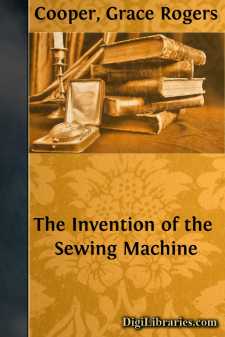Categories
- Antiques & Collectibles 13
- Architecture 36
- Art 48
- Bibles 22
- Biography & Autobiography 813
- Body, Mind & Spirit 142
- Business & Economics 28
- Children's Books 17
- Children's Fiction 14
- Computers 4
- Cooking 94
- Crafts & Hobbies 4
- Drama 346
- Education 46
- Family & Relationships 57
- Fiction 11829
- Games 19
- Gardening 17
- Health & Fitness 34
- History 1377
- House & Home 1
- Humor 147
- Juvenile Fiction 1873
- Juvenile Nonfiction 202
- Language Arts & Disciplines 88
- Law 16
- Literary Collections 686
- Literary Criticism 179
- Mathematics 13
- Medical 41
- Music 40
- Nature 179
- Non-Classifiable 1768
- Performing Arts 7
- Periodicals 1453
- Philosophy 64
- Photography 2
- Poetry 896
- Political Science 203
- Psychology 42
- Reference 154
- Religion 513
- Science 126
- Self-Help 84
- Social Science 81
- Sports & Recreation 34
- Study Aids 3
- Technology & Engineering 59
- Transportation 23
- Travel 463
- True Crime 29
The Scholfield Wool-Carding Machines
Categories:
Description:
Excerpt
First to appear among the inventions that sparked the industrial revolution in textile making was the flying shuttle, then various devices to spin thread and yarn, and lastly machines to card the raw fibers so they could be spun and woven. Carding is thus the important first step. For processing short-length wool fibers its mechanization proved most difficult to achieve.
To the United States in 1793 came John and Arthur Scholfield, bringing with them the knowledge of how to build a successful wool-carding machine. From this contribution to the technology of our then infant country developed another new industry.
The Author: Grace L. Rogers is curator of textiles, Museum of History and Technology, in the Smithsonian Institution's United States National Museum.
Carding is the necessary preliminary step by which individual short fibers of wool or cotton are separated and cleaned of foreign materials so they can be spun into yarn. The thoroughness of the carding determines the quality of the yarn, while the position in which the carded fibers are laid determines its type. The fibers are laid parallel in order to spin a smooth compact yarn, or they are crossed and intermingled to produce a soft bulky yarn.
Primitive Carding
The earliest method of carding wool was probably one in which, by use of the fingers alone, the tufts were pulled apart, the foreign particles loosened and extracted, and the fibers blended. Fuller's teasels (thistles with hooked points, Dispasacus fullonum), now better known for raising the nap on woven woolens, were also used at a very early date for carding. The teasels were mounted on a pair of small rectangular frames with handles; and from this device developed the familiar small hand card (see fig. 2), measuring about 8 inches by 5 inches, in which card clothing (wire teeth embedded in leather) was mounted on a board with the wire teeth bent and angled toward the handle. The wool was placed on one card and a second card was dragged across it, the two hands pulling away from each other. This action separated the fibers and laid them parallel to the handle, in a thin film. After the fibers had been carded in this way several times, the cards were turned so that the handles were together and once again they were pulled across each other. With the wire teeth now angled in the same direction, the action rolled the carded fibers into a sliver (a loose roll of untwisted fibers) that was the length of the hand card and about the diameter of the finger. This placed the wool fibers crosswise in relation to the length of the sliver, their best position for spinning. Until the mid-18th century hand cards were the only type of implement available for carding.
Figure 2.—Hand Cards "Used on Plantation of Mary C. Purvis," Nelson County, Virginia, during early 1800's and now in U.S. National Museum (cat. no.T2848;Smithsonian photo37258).Figure 3.—The First Machine in Lewis Paul's British Patent 636, Issued August 30, 1748.The treadle move the card-covered boardB, in a horizontal direction as necessary to perform the carding operation. With the aid of the needlestick the fibers were removed separately from each of the 16 cardsN. The carded fibers were placed on a narrow cloth band, which unrolled from the small cylinderG, on the left, and was rolled up with the fibers on the cylinderI, at the right....


